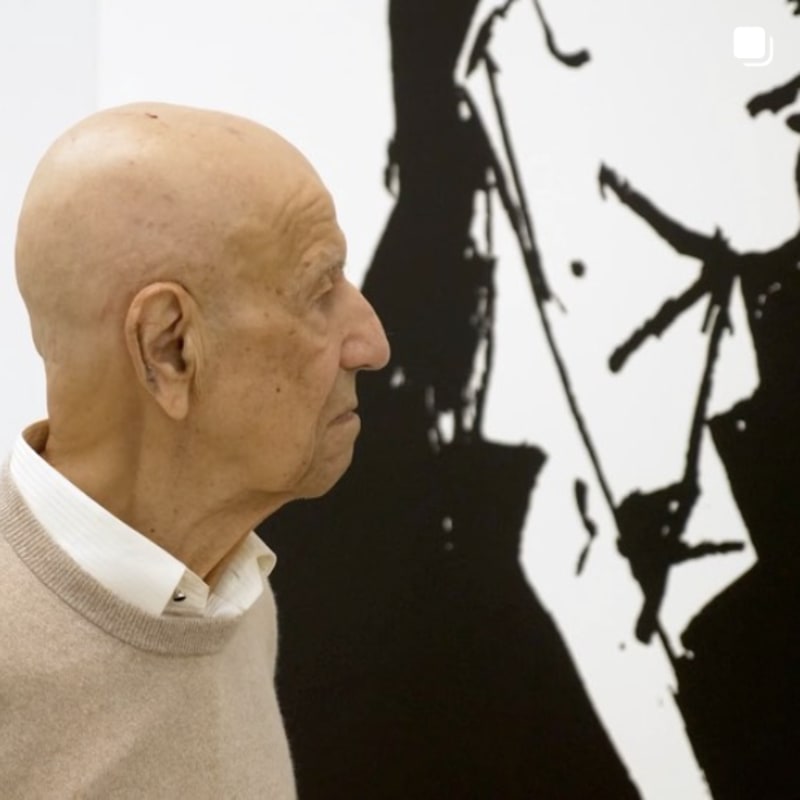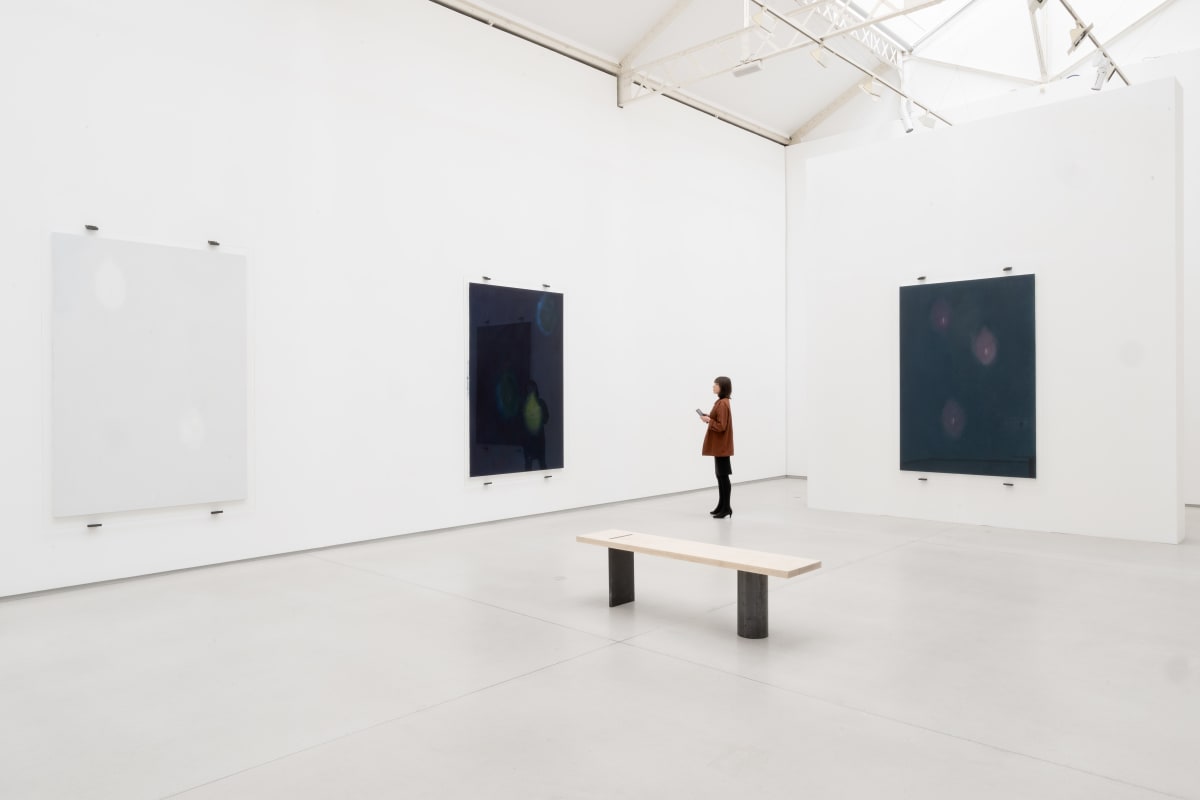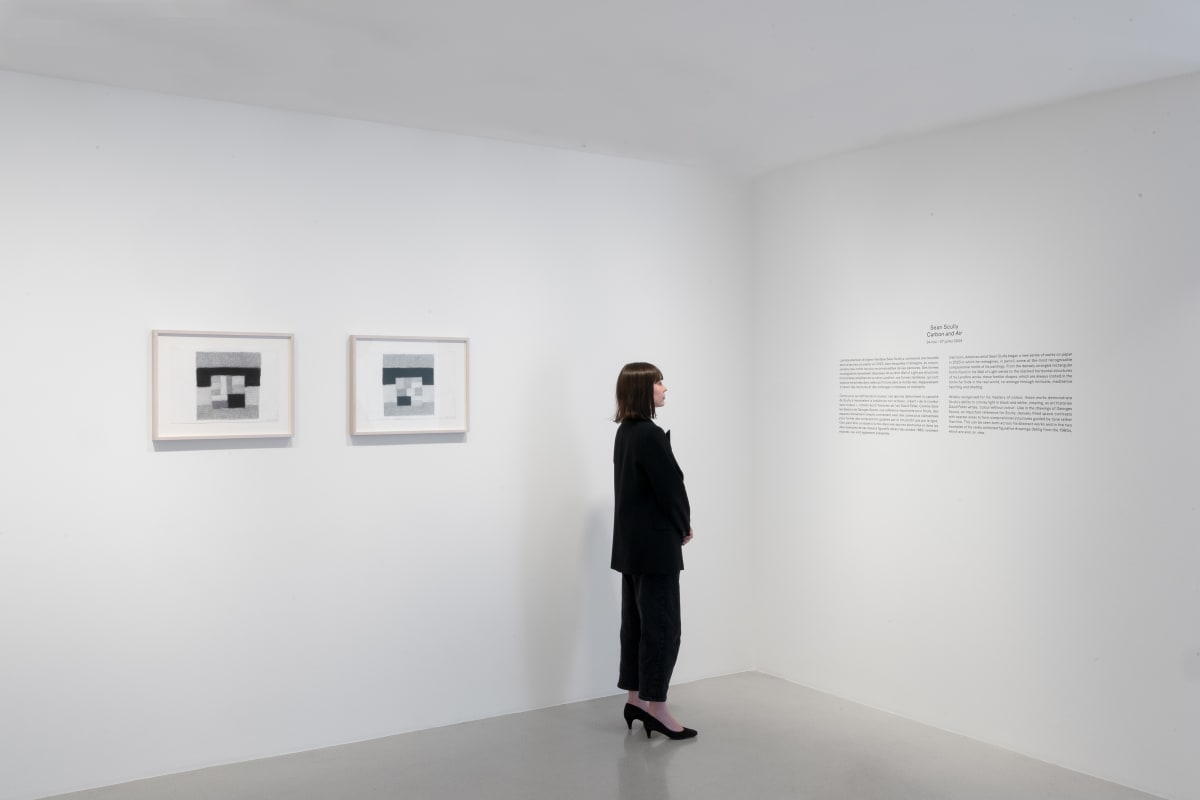Sean Scully’s timeless art: ‘Emotion will always conquer the idea’ William Cook
In the leafy grounds of Houghton Hall, a magnificent stately home in Norfolk, the curator Sean Rainbird is guiding a gaggle of art critics around Sean Scully’s latest show. Scully is arguably the world’s leading living abstract artist. His artworks are instantly recognisable: bold geometric paintings (and sculptures) that look like they’ve been created by a grumpy giant.
His detractors say there’s not a lot to them – they say anyone could do them, but when it comes to art there’s only one question that really matters: would you want to hang one of his paintings on your living room wall? For most of us, this question is entirely hypothetical. To buy one of his bigger works, you’d probably need the best part of £1m. However, if I could afford one (and if I had a bigger living room) then yes, of course I would.
At first glance they don’t look like much, but their apparent simplicity is deceptive. There’s actually a lot of depth to them. “That’s really the key to what makes him such an interesting abstract painter,” says Rainbird. The more time you spend with them the more they grow on you. They’re powerful and alluring. They slowly draw you in.
Sean Scully is incredibly prolific. A list of his recent exhibitions reads like an inventory of Europe’s finest galleries: London’s National Gallery; Waldfrieden Sculpture Park in Wuppertal; the Albertina in Vienna... From Barcelona to Budapest, from Washington DC to Mexico City, the list goes on and on.
His groundbreaking show in China took the Asian art world by storm. That touring show was called Resistance and Persistence – a title that sums up his never-say-die attitude. His tireless productivity is remarkable. Lately, he started making sculpture again, for the first time since he was at art school. He has the stamina of an artist half his age. He’s 77 now, nearly 78, and he’s still going strong.
His return to sculpture has been the main development of his later years, and there are some spectacular examples here at Houghton Hall. A rusting metal monolith recalls the London bombsites he played on as a boy. It feels like such a natural progression from his paintings that the only surprise, to my mind, is that he didn’t start making sculptures a lot sooner. A lot of his early pictures are almost sculptural, painted on planks and rafters salvaged from derelict buildings. His monumental sculptures mimic the broad stripes of those abstract paintings, reproduced in huge stacks of wood, steel and stone.
The reason he has such broad appeal is that his artworks are universal. You don’t need to search for hidden meanings. They don’t ask too much of you – that’s the secret of their success. No matter where you come from, how much you know about art or how little, you can enjoy their subtle beauty. There’s something strangely soothing about them, like staring out to sea.
Sure, they’re relatively rudimentary – often variations on a single theme. But you could say that of lots of other abstract artists, like Mondrian and Rothko – artists he’s often likened to. These comparisons are invidious. Sure, there are some superficial similarities, but there are just as many differences.
“My work isn’t like Mondrian or Rothko,” he tells me over coffee in a quiet corner of Houghton Hall. “It’s repetitive and rhythmic – it’s like rock’n’roll.” When you ask him about his influences, he mentions musicians as much as artists. He likens his multi-layered brushwork to Phil Spector’s Wall of Sound.
I reckon the reason he’s still hard at it, in his late seventies, is because he’s roamed so far and wide. He’s lived and worked in Berlin and Munich, as well as New York, where he lives today. Every country he’s visited has inspired him. He was profoundly influenced by his travels in Morocco and Mexico. “They’re a little bit dangerous, they’re a little bit weird and you have to stretch your mind to understand them. There’s something elemental about them.” The rich colours of both countries, the dusty reds and burnt ochres, bleed into his art.
He reminds me of a villain in a British gangster movie – impeccably polite but with an underlying hint of menace. If you met him in a pub, you wouldn’t mess with him, I thought, the first time I met him. He looks like a retired bouncer. He still looks much the same today. Although he’s lived in America for most of his life, he’s retained his London accent. He sounds like Michael Caine in Get Carter or Bob Hoskins in The Long Good Friday.
“He’s a powerful presence,” says Rainbird. “He takes no prisoners.” I know exactly what he means. In On the Line, Kelly Grovier’s absorbing book of conversations with the artist, Grovier said he looked “like someone interrupted burying bodies under floorboards”. He has the bearlike gait of a fairground wrestler. His pale blue eyes pin you to the wall. Rainbird calls him “a no bullshit artist”. He’s remorselessly determined and utterly sincere.
He was born in 1945, in Dublin. The poverty of his early life sounds positively Dickensian. He called his childhood “a season in hell”. His first home was a one-room basement, seven feet square. His mother came from a mining family in Durham. His Irish father was a barber who went to prison for desertion from the British army. His parents brought him to London when he was four. They fought like cat and dog. “It was extraordinarily stressful,” he says. “There would be these explosive fights.”
Imagination was the only refuge, a respite from the anxiety that his parents instilled in him. He wet the bed until he was 20, but there were brighter moments too. His childhood home in Highbury was enlivened by colourful, eccentric housemates: a transvestite comedian; a useless boxer who got knocked out every time he fought. He loved watching the Punch and Judy shows on Hampstead Heath. “Art for me has always had something to do with salvation,” he once told me. I sometimes wonder if his stripy paintings hark back to Punch’s stripy booth.
Art was a vague, persistent presence in his upbringing, an elusive portent of a different future. He was fascinated by the Stations of the Cross in his local Catholic Church. A reproduction of Child with a Dove, one of Picasso’s most tender, heartfelt paintings, hung on the wall of his school hall. He looked at it every day for four years, yet when he went to Trafalgar Square to feed the pigeons, he didn’t even know the National Gallery was there.
In his teens, he ran around with street gangs for a few years. Many of his friends were criminals. “Most of my friends, half of them, at least, from my childhood are dead,” he told me, the first time I met him. “They went to prison, they got into drugs – violence, of one kind or another.” He could have gone the same way. “Criminals are artists without the same degree of imagination,” he says.
Art gave him hope and steered him away from what might have become a life of crime. For a few years he worked as a typesetter, printmaker and graphic designer. He took evening classes in life drawing. He applied to a dozen art schools. They all rejected him, apart from Croydon School of Art. That was the turning point. That was when his life took off.
“When I got into art school, I could hardly believe it,” he remembers, the memory of that moment still palpable nearly 60 years later. He never wanted to waste a single moment. He felt as if his life had been saved. He discovered the German Expressionists, whose intense paintings feel far closer to his expressionistic style than the minimalist artists of his own era (Germany has always been a particularly receptive market for his work). “I thought I was going to lose my mind – it was so exciting,” he remembers. “It was the raw emotion. And there’s some sort of sadness in them.”
That sadness and emotion fed into his own work. Finally, he had an outlet, a release from all that childhood trauma. He also found an inspirational teacher, a man called Barry Hirst. “Always use the biggest brush you can,” Hirst told him. Scully heeded his advice. His wide, unwieldy brushstrokes have remained a defining feature throughout his long, lucrative career.
After Croydon, Scully never looked back. An upbringing that should have crushed him somehow gave him indefatigable self-belief. He went to Newcastle University, where he took a first-class degree in fine art. A fellowship at Harvard and a professorship at Princeton followed. At his first one-man show, at London’s Rowan Gallery, in 1973, he sold every picture – an extraordinary achievement for a debut exhibition.
Why was he so successful? Essentially, because he fused two contrasting artistic genres, Minimalism and Expressionism. Minimal art had become increasingly constricted. Scully put the heart back into it. He gave it guts. “Emotion will always win out with me,” he says. “Emotion will always conquer the idea.” Maybe he only had one big idea, but a lot of the best artists only have one thing to say, and he said it perfectly. No survey of modern art is quite complete without him.
Since that first show 50 years ago, his career has been a cavalcade of almost monotonous success. He moved to New York in 1975 and conquered the American art world, through force of personality and sheer willpower as much as talent. For a European artist, New York is the toughest nut to crack, but Scully relished the challenge. He was up for the fight.
He has a love-hate relationship with America, but its energy galvanised his art. “My experience of America is that it’s built on winners and losers, and if you put me in that situation it can only go one way. I’m not going to come off as a loser. It’s just not going to happen – I am quite fearless and you can’t intimidate me. It just can’t work. I won’t have it. All this has stood me in great stead.”
Yet in 1983, the year he became a US citizen, he suffered a life-changing catastrophe. His 18-year-old son Paul, who was born in 1965 (when Scully was 19) died in a car crash. Scully heard the news in his studio, a paintbrush in his hand. “I just dropped it on the floor and walked out of the studio. I didn’t go back for three months – his mother died of a broken heart.” The colour drained out of his paintings. It took a long time to come back.
“You can never recover from it,” he says, yet he found a sort of resolution in 2009, with the birth of his second son, Oisin – the product of his fourth marriage, to the artist Liliane Tomasko. Scully was 64 when Oisin was born, pretty old to become a dad, but he embraced this second shot at fatherhood. His palette became brighter, his pictures became more diverse and he started making sculpture again. At the opening of his one-man show at Yorkshire Sculpture Park, five years ago, I heard a reporter ask him if sculpture had given him a new lease of life. “My lease of life comes from my son,” he replied.













































































































































































